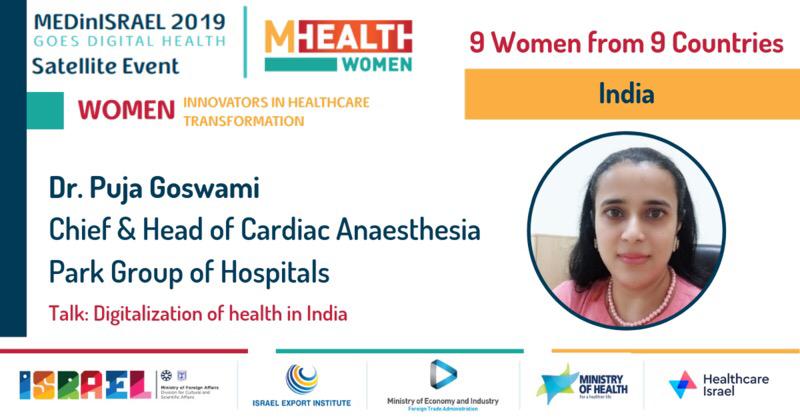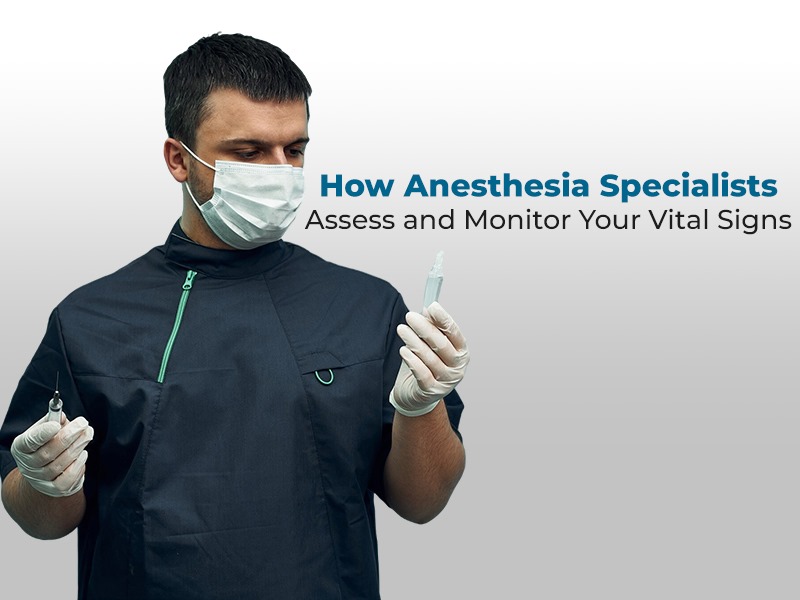1) First Indian woman to become keynote speaker in health event
2) Event on 25 March 2019, Israel
3) Top innovators and business people will be coming from all over the world
4) Proud that she is a part of Park Group of Hospital’s


M-Health: My Interpretation
If we trace our way back in time, we realise how essential it was for us to be able to make frequent visits to the hospital to collect reports. However, following digitalisation, this scenario has drastically changed. The advent of mobile health operating system has enabled us to receive our health updates with just a few swipes. The ease of information that technology has brought in is massive.
When you talk about M-Health, ‘M’ denotes mobile. ‘M’ also means ‘me’. It is the revolutionised healthcare mechanism that is personalised and comes with the promise of modern technology. Moreover, the reason why M-Health requires mass awareness is because of the collective improvement of health it can bring around the world. Mobile health makes full use of computing technology for a variety of health-related purposes.
India at a Glance
In order to understand the penetration of mobile health in India, it is important to have an overall view of India as a country. First, India is the seventh largest country by demography and has the highest population in the world. Being the fastest developing economy in the world, it is readily accessible by land, air and water.
Over the centuries, there has been a significant fusion of cultures across the nation. Thus, today India is multilingual and multicultural with a blend of many religions. However, one significant reason why India has gained exposure in recent years is for medical tourism.

New Technology + New Trends
Some consumer-owned technologies for mHealth include tablets, mobile phones, iPads, Smart TV and laptops. As mobile technology has gathered pace, there are several potable wearable biometric sensors that have surfaced in the recent years like activity trackers, smartwatches, smart clothing, patches or tattoos and even ingestible and smart implants.
Why “DIGITALISATION” Will WORK.
There is no doubt why digitalisation will work in India. The range of applications and services supported by mHealth systems is undoubtedly aligned with the digital parameters. If we draw a comparison between India and USA, a user spends around 200 minutes every day on mobile internet in India, out of which 40% of people spend their time on social media and communication. Now, if we focus on this 40%, 38% of people spend their time on Facebook, WhatsApp and Instagram and 2% on others. Furthermore, 30% of Indians spend their time on entertainment, whereas the remaining 30% of people spend their time on other categories like gaming, browser, news and commerce.
Now, when we bring our attention to the USA, a user spends 300 minutes a day on mobile internet, 33% on social media and communication, of which 18% spend their time on Facebook, WhatsApp and Instagram and the remaining 12% on others. 18% of Americans also spend their time on entertainment and the rest 49% on other categories.
Integration of DIGITAL Concept in Hospitals
It is undeniably true that M-health fosters the integration of digital concept in hospitals, which is a complex intersection of different industries and stakeholders. For instance, the data collected from the patient is set via a remote monitoring device for authentication, which in turn is sent to healthcare storage and analytical server. This enables the doctor to look into the data and intervene for further proceedings.
In terms of digital health, mobile technologies act as a catalyst to connect and integrate a dedicated chain of care including health informatics, wireless health, telehealth (like telemedicine and telecare) and health telematics.
What I See…
As per my vision, there are several aspects of digital health, namely, clinical trials, mHealth, wellness, Telehealth-care or Remote monitoring, Wearables, Health Analytics, Visualisation and so on.

Primary Health Care
Primary Health care, which is the building block of the health system is the range of services that communities receive on a regular and ongoing basis from medical practitioners to stay healthy, get better and manage ongoing illnesses. In India, the ratio between doctors and patients is 1:1700. Given the existing range of primary health care centres in India, around 40,000 villages went digital in 2018 despite our struggle to integrate digitalisation in healthcare. Now, it is high time that the equipment of all primary health care centres is set up with internet connectivity. Moreover, the ANM workers, who are the first line responders should also be provided with smartphones with a proper internet connection. Additionally, all health care providers must be taught the need and importance of connecting with patient and doctors through a digital platform. The government should also devise programs to reward people who achieve great milestones in using the digital platform. This will encourage a gradual shift towards the digital world.
PHC Hurdles
One of the biggest challenges faced by societies worldwide is the inability to make high-quality healthcare affordable and accessible to all. In this regard, there are several hurdles that are faced by the primary healthcare centers in certain areas like health education, promotion of nutrition, basic sanitation protocols, requirements and needs in terms of mother and child health, overcoming social stigmas of health practices, prevention of communicable diseases, immunization, appropriate RX for injuries and many more.
Safety
In terms of safety, users can co-create risk as well as value. For instance, patients face unavoidable dangers of false expertise, unwarranted trust in junk apps, unjustified trust in systems or their overseers, or in terms of dependency and self-reliance. On the other hand, for professionals, there are risks of under the counter clinical transactions, inappropriate tools, failure to integrate hand-held and organisational data and failure to define lines of responsibility.

Benefits of Telehealth (TELL – ME)
We are all aware of the strenuous hours that it typically takes to see the doctor for barely twenty minutes, that approximately includes 37 minutes of travel time, 64 minutes of waiting at the clinic and around 20 minutes to see the doctor. On the contrary, with Telehealth, people can avoid those long two hours of wait time at the doctor’s office.
However, m-Health comes with its own benefits and challenges. For instance, it is cheaper, reacts faster to emergencies, saves time on travelling, reduces quack practices, allows medical practitioners to attend more patients simultaneously, builds confidence among relatives and also provides value-added services for your mobile. On the other hand, it also encourages unnecessary questions, thereby increasing call cost, hampers doctor-patient privileges, needs super-fast internet, gives rise to payment or medico-legal issues and also motivates people against visiting the hospital during actual need.
Currently, we are at the tip of the iceberg with 97000 health apps. So, you can very well imagine what all we can do if we utilise almost everything with the help of AI, AR or VR. However, we need to cautious that no titanic comes and hits it. After all, every new technology has either of the two futures, ‘DISTINCTION’ or ‘EXTINCTION’.
Nothing is more essential than the satisfaction of our patients. Patients are equally satisfied with video calls as they are more personalised and interactive. They are often happier since they save a lot of money, travelling and stress. Moreover, as compared to personal visits, the ease of interaction also increases the frequency of interaction. Patients also feel more confident and positive about their self and health and leave no stone unturned in advising their friends and family about virtual call consultation.

My Ideas
As per my opinion, doctors should write two prescriptions- Rx and m Rx. Moreover, special groups should be created for women, kids, patients suffering from diabetes, teenagers, pregnant females, elderly, special care, disability and so on. Several initiatives should be taken and consistent efforts should be made in educating people about digital skills. Exposure to the app should be provided by the first-hand experience through healthcare providers. Free WiFi should be provided by all hospitals and repayment must be done by health insurance
companies. Last but not least, the government should seek to intervene as it is extremely essential to bring about digitalisation in healthcare.





